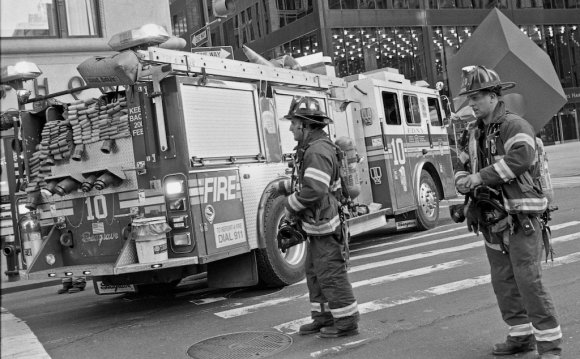
 Emergency medical technicians (EMTs) and paramedics attend to and treat the sick and injured in emergency medical settings. As an EMT, your quick reactions and timely intervention can save the lives of those who are critically injured or ill. To be able to do this efficiently, requires a high level of training in addition to which you need to be physically fit as the job calls for a considerable amount of bending, kneeling and lifting.
Emergency medical technicians (EMTs) and paramedics attend to and treat the sick and injured in emergency medical settings. As an EMT, your quick reactions and timely intervention can save the lives of those who are critically injured or ill. To be able to do this efficiently, requires a high level of training in addition to which you need to be physically fit as the job calls for a considerable amount of bending, kneeling and lifting.
All emergency medical technicians and paramedics are required to complete a formal training program and to be licensed. Specific requirements may vary from one state to another.
EMT Education and Training
A high school diploma or equivalent and a CPR or cardiopulmonary resuscitation certification are both mandatory requirements for most formal EMT education and training programs.
If you are interested in pursuing a career as an emergency medical technician or a paramedic, you will have to take courses in anatomy and physiology. Formal training is provided by community colleges, technical institutes and other establishments that specialize in emergency care training.
There are four levels of EMT training and certification. The curriculum for each of these courses overlaps across several areas but each of them offers some specialization that is unique and different from the others.
The EMT-Basic level: Training at the EMT-Basic level includes instruction in dealing with cardiac and trauma emergencies, clearing obstructed airways, evaluating patients’ medical condition and assessing the level of emergency and using field equipment. A formal course at this level includes approximately 100 hours specialized training. Part of the training is conducted in ambulance and hospital settings.
The Advanced- EMT level: Training at the advanced level, also known as the EMT-Intermediate 1985 or EMT-Intermediate 1999 level, requires 1, 000 hours of training. Professionals at this level complete all of the coursework included at the basic level and do additional advanced training in the use of complex airway devices and in administering intravenous fluids and medications.
The Paramedic Level: Paramedics have the most advanced level of training. To be qualified as a paramedic, you will have to first complete the first two levels and then move on to more advanced medical skills. Paramedic programs may take up to 2 years and include about 1, 300 hours of training. Their wider scope of practice may include administering IV medications and stitching wounds. Technical schools and community colleges and may offer this training and students who graduate from the program receive an associate’s degree.
While some emergency medical services hire separate ambulance drivers, most prefer to have EMTs who are also qualified to drive an ambulance. Separate training and licensing is required for this. Most EMTs and paramedics take an additional course with 8 hours of training before they can drive an ambulance.
Licenses and Certification
All emergency medical technicians and paramedics have to be certified by the National Registry of Emergency Medical Technicians (NREMT) before practicing.
While all states in the US require EMTs and paramedics to be licensed, requirements vary by state. In most states you qualify for licensure if you have an NREMT certification, whereas in others you may be required to pass an equivalent exam. To apply for a license you must be over 18 years of age. Most states will conduct a background check and some states do not give licenses to applicants who have a criminal history.
RELATED VIDEO












